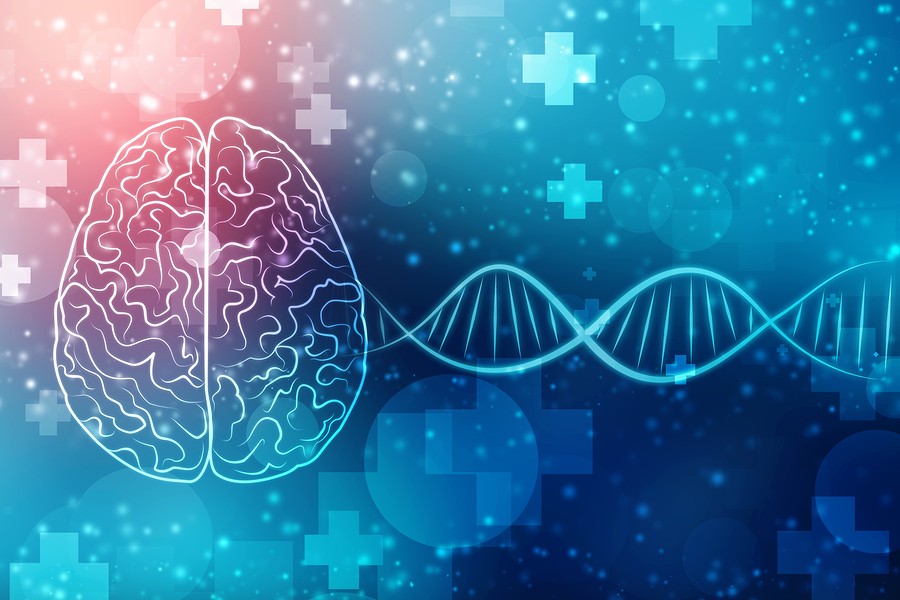
Cognitive impairment is something no one wants to go through, but we will all suffer from it at some stage in our lives. There are many reasons why one would start to suffer cognitive decline, but a major contributing factor is synaptic loss. The synapses are the junctions between neurons where chemical information is exchanged. Sensory, motor and cognitive impairments are associated with the increased destruction of synapses, which can lead to neurodegenerative conditions such as major depressive disorder, Huntington disease, schizophrenia, dementia, Alzheimer’s disease and amyotrophic lateral sclerosis.
Reduced levels of brain-derived neurotrophic factor (BDNF) have been detected in those suffering from neurodegenerative diseases. This important brain protein promotes the survival of neurons as it plays a role in the growth, maturation and maintenance of brain cells. BNDF serves as a neurotransmitter modulator and participates in neuronal plasticity, making it essential for learning and memory(1). It binds to its high affinity receptor TrkB (tyrosine kinase B), where its activation signals transduction cascades (IRs1/2, PI3K, Akt), crucial for CREB and CBP production, which encode proteins involved in β cell survival. Similar to insulin-like growth factor 1, BNDF has downstream signaling mechanisms incorporating both p-CAMK and MAPK that increase the expression if pro-survival genes(1). This signaling through TrkB receptor plays a central role in promoting synaptic transmission, synaptogenesis and facilitating synaptic plasticity, making it an attractive candidate for targeted therapies(3). BNDF is vital for optimal brain health and functionality, but as we age the expression of this protein decreases, further leading to cognitive decline and neurological diseases. Although through increasing BNDF signaling, pre-clinical studies demonstrate that this may be a potent way to prevent, arrest and even reverse abnormal neurodevelopmental disorders(4).
Recent studies into 7,8-dihydroxyflavone (7,8 DHF), a small TrkB agonist that mimics BNDF function, has shown similar effects as BNDF in promoting neuronal survival and regeneration following traumatic brain injury(2). 7,8 DHF is a naturally occurring plant flavonoid that has a longer half-life in comparison to BNDF, as well as being much smaller in molecular size, allowing it to penetrate the blood-brain barrier(2). It has been found to decrease cortical Aβ plaque deposition and protect cortical neurons against reduced dendritic arbor complexity, but has no impact on the density of dendritic spines. In addition to this it also protects against hippocampal increase in the level of choline-containing compounds and glutamate loss(3). 7,8 DHF promotes axon regeneration, inhibits the loss of hippocampal synapses, restores synapse number and synaptic plasticity, which prevents memory deficits(5)(8).
Huntington’s disease (HD) is a fatal neurodegenerative disease. Research has demonstrated a link between HD and reduced levels of striatal BNDF with an imbalance between its TrkB receptors and p75(NTR)(6). Thus, molecules with activity on the BNDF/TrkB/p75 system can potentially have therapeutic effects. After chronic 7,8 DHF administration, analyses revealed improved striatal levels of enkephalin, prevention of striatal volume loss, TrkBY816 phosphorylation recovery in striatum, normalized striatal levels of induced and neuronal nitric oxide synthase while ameliorating the imbalance of p75/TrkB(6). This supports its potential therapeutic role in those suffering with HD and other neurological ailments.
7,8 DHF has shown to protect people suffering from severe stress and traumatic brain injury (TBI). Post-traumatic stress disorder (PTSD) occurs after being exposed to a traumatic situation; this is characterized by cognitive deficits which include impaired explicit memory. 7,8 DHF significantly reverted spatial memory impairment and the increased long-term potentiation, supporting the idea that the activation of BNDF/TrkB pathway fulfills a protective role(7). When 7,8 DHF was taken alongside exercise, it has shown to improve brain function in those with traumatic brain injury. This combination enhances hippocampal functional connectivity, promoting enhanced levels of cell metabolism, synaptic plasticity and increases brain circuit function that facilitates greater rehabilitation after TBI(9).
Parkinson’s disease is caused by the destruction of dopamine producing neurons within part of the midbrain called substantia nigra. Studies show 7,8 DHF has potent neuroprotective effects through the activation of TrkB, which significantly improves dopamine-mediated behaviours and prevented the loss of dopaminergic neurons in the substantia nigra(10).
Due to the suspected low-water solubility, chemical instability, and poor bioavailability of 7,8 DHF, further research is on the way into increasing its absorption, thus potentially increasing its therapeutic effects. To overcome this, scientists fabricate stable 7,8 DHF loaded zein/lactoferrin composite nanoparticles which increases the chemical stability, water solubility and bioaccessibility(11). 7,8 DHF has an array of positive effects on numerous conditions and diseases, which warrants great interest in this natural compound. Even with its poor bioavailability, it still has noticeable cognitive enhancing effects and would work well in anyone’s nootropic stack to increase the brains overall health and functionality, warding off age related cognitive disorders.
Written by Luke Pavasovic
Director and Naturopath at Alchemic Health
facebook.com/alchemichealth
www.alchemichealth.com
References:
1. https://www.ncbi.nlm.nih.gov/pmc/articles/PMC4697050/
2. https://www.ncbi.nlm.nih.gov/pmc/articles/PMC5319242/
3. https://pubmed.ncbi.nlm.nih.gov/29510124/
4. https://pubmed.ncbi.nlm.nih.gov/26220903/
5. https://www.ncbi.nlm.nih.gov/pmc/articles/PMC3895241/
6. https://pubmed.ncbi.nlm.nih.gov/28541476/
7. https://pubmed.ncbi.nlm.nih.gov/27068341/
8. https://pubmed.ncbi.nlm.nih.gov/24043773/
9. https://pubmed.ncbi.nlm.nih.gov/28315455/
10. https://pubmed.ncbi.nlm.nih.gov/27019033/
11. https://www.sciencedirect.com/science/article/abs/pii/S0141813019401244